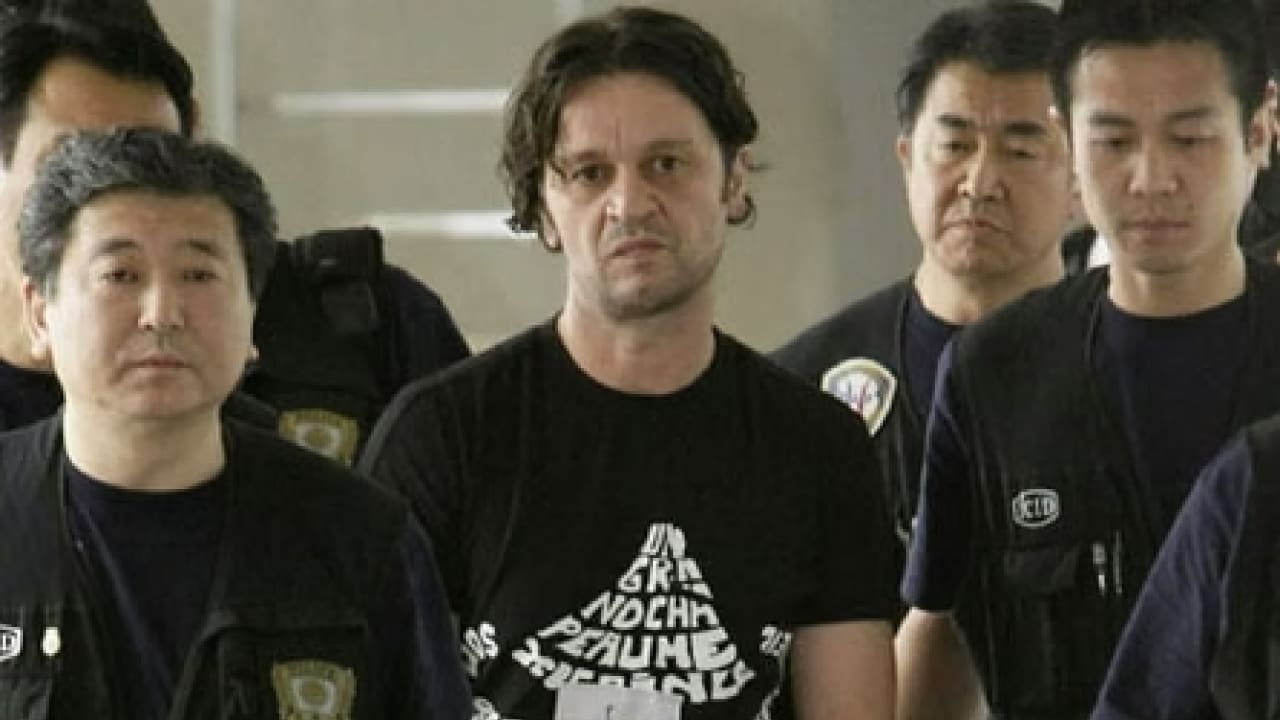With high-velocity escapes and costumes straight out of Hollywood, the Pink Panthers have captivated global law enforcement and media for more than 20 years. Their carefully plotted jewel heists that have taken place across continents have rendered them legendary in the criminal underworld.
Table of Contents
However, who are the Pink Panthers? And what got these boys the dreaded tag? How are they evading police in a country with one of the most sophisticated surveillance systems on earth?
In this deep dive, we explore the origins, methods, and legacy of the world’s most famous jewel thief syndicate.
Who Are the Pink Panthers?

The “Pink Panthers” was a nickname given by Interpol, inspired by the 1963 Peter Sellers movie. The bad guys behind it may be harder to track down, but make no mistake here: while the name makes things look glamorous, these are not wannabe fictional criminals.
The core members of the Pink Panthers are a network of Balkan jewelry thieves, primarily from Serbia, Montenegro, Bosnia and Herzegovina, and Croatia.
Most are believed to be war veterans from the Yugoslav Wars and have taken part in tactical training. It provides them with discipline and an experience that has made their operations ruthlessly accurate.
Notable Fact
The group itself is thought to have around 800+ members, based in cells across Europe, the Middle East, and Asia, according to OCCRP.
Military Roots in the Balkans
The majority of Panthers originate from post-Yugoslav states, with Serbia and Montenegro especially. Among them are former soldiers and paramilitary fighters from the Yugoslav Wars of the 1990s. This gave them:
- Combat skills
- Discipline
- Knowledge of firearms and tactics
- Common Smuggling Techniques And Black-Market Logistics
These skills got redirection to one of the most successful criminal organizations in human history.
Size and Structure
- Estimated Members: 800+ globally
- Operational Cells: 30+ countries
- Structure: Decentralized network without hierarchy, operating through small autonomous cells.
Interpol and Europol have worked to map the hierarchy of Panthers, but Panthers rarely maintain long-term operational bases.
The First Mass Market Success – London, 2003
They first emerged in 2003, with a high-profile heist in London’s Mayfair. The modern-day Pink Panther robbers stole a £500,000 diamond ring from a Graff Diamonds store. It was later import to Serbia before hiding the gem in face cream – just like that scene from the 1963 Pink Panther film.
This heist would be their signature and sparked an international investigation.
Their Signature Tactics
The Pink Panthers use strategy in their heists, executing them with a careful mix of speed and surprise. Many law enforcement agencies like to refer to their hits as “military operations” or “scenes from Hollywood.”
Common Techniques Include
- Disguises: Cross-dressing to fake beards, extensive costumes are always an inclusion.
- Stolen Luxurious Cars: For quick eye candy getaways.
- Time and Precision: Some of the missions are done in less than 90 seconds.
- Strategic Casing: Members are undergoing casing, which can involve posing as wealthy clients for days or even weeks to study the security.
Example – Dubai Mall Heist (2007)
It was a scene in a heist flick, the kind where four men drove Audis into Wafi Mall dressed in black and smashed through the glass doors before racing through a luxury boutique, stealing more than $3.4 million worth of diamonds in minutes.
The heist was recorded via security footage, and the Global audience – and anyone else who stumbled upon it – reacted as though they’d watched Ocean’s Eleven.
Global Reach – Their Hiests by the Numbers
The Pink Panthers have been behind some of the most meticulous and greatest robberies that modern criminal history has known. They operate on several continents, and their dramatic cat-burglar-like ability has led them to earn comparison to movie heist crews. The sheer number of their network tells the story of how massive and successful they are.
Confirmed Heists and Global Spread
Confirmed Heists: 130+ (All with meticulous planning)
Countries impacted: Over 30 countries, targeting high security financiers and luxury markets in:
- Europe: France, Monaco, Switzerland, Germany, UK, Spain, Italy, Belgium, Liechtenstein, and more
- Asia: Japan, UAE, Bahrain, Lebanon
- North America: Canada
- Oceania: Australia
One thing is striking about their ability to target high-end jewelry shops in some of the most fortified cities in one of the tightest-regulated global businesses – Geneva, Dubai, Tokyo.
It shows not only ambition but an inside perspective on how law enforcement operates locally and escape routes internationally.
Estimated Financial Impact
Estimated total value of stolen jewels and assets: Between $300 to $500 million each. This staggering figure includes:
- They pulled off some heists for $2 million to $30 million each
- Diamonds (rare and traceable), watches (luxury), and antique jewelry
- Losses from non-recovered merchandise, often quickly smuggled and sold through black market channels
A Notable Year – 2008
Interpol 2008 records show that the Pink Panthers committed several high-value heists over the year that accounted for $30m USD in losses collectively. It was a coordinated campaign and was committed within weeks of each other, sometimes in several cities in the same area.
The Harry Winston robbery in Paris resulted in a loss of nearly USD 100 million worth of jewels in a single heist. Although not all of that was recoverable, several of the members were later detain, highlighting how successful and dangerous their high-stakes operation could be.
Interpol’s Classification
Because of the number, frequency, and broad geographical breadth of their robberies, Interpol describes the Pink Panthers as a global criminal phenomenon. A great deal of their heists carry some of the clues:
- Minimal violence
- High-speed luxury vehicle escapes
- Costume Changes (wigs, skin prosthetics, or cross-dressing)
- 3-minute entry and exit for most locations
Some of the Most Infamous Heists of All Time
1. Tokyo (2004)
Thieves brazenly made off with a $31 million diamond necklace in broad daylight in the upmarket Ginza district. It is still one of the largest ever jewelry thefts in Japan.
2. Saint-Tropez, France (2005)
Floral shirts on, designer hats in place, the Pink Panthers sauntered into a French Riviera boutique and simply took what they wanted before leaving on speedboats like some James Bond thriller.
3. Paris (2008)
Four men wearing wigs, two as women, who made off with $108 million in diamonds, are believe to be the masterminds. Police take in a few suspects in link to the Panthers, but only part of the loot was recovered.
Why They’re So Hard to Catch?
- Loose Network Structure: The Panthers function as an independent cell group and not a top-down hierarchical mafia. In doing so, they become quicker and more difficult to break into.
- Cross-Border Operations: Many are multilingual, own multiple passports, and globe-trot between countries, making it all but impossible to bring a prosecution.
- Military Discipline: The fact that these individuals deploy diversion, pre-plan the escape routes, history, and communication jamming displays a level of training that is seldom in law enforcement.
Who Joins the Pink Panthers?
Media coverage often romanticizes the group – “One Great Union,” and all that jazz. It’s a little more complicated than that. Some of its members are former security officers turning into criminals in a conflict-ridden zone.
A Former Member’s Account
The experience was “addictive” and “like a brotherhood,” described one former Pink Panther in a 2013 Vice documentary, before adding that there was always danger and the eventual downfall.
Are The Pink Panthers Still Active?
Yes – many suspect its members are still at it, just not as boldly or publicly as said in the Pink Panther script. Though members have been arrested over the years, the core network seems to have simply changed rather than disintegrated.
Evidence of Continued Activity
Developments in recent months point to the group – or, at least, a network of cells operating under its brand – still being active globally:
- Interpol Involvement: This list of wanted suspects is maintained by Interpol and its involvement in that respect. Decades of international efforts notwithstanding, many members of the group are still at large, and additional suspects add up from time to time.
- Recent Arrests and Investigations: In 2020, Spanish authorities arrested several suspects who were part of a transnational burglary group with alleged links to the Pink Panthers. In 2018, the Serbian police discovered a robbery group that had committed thefts in Austria and Germany. Several of the suspects were believe to have links to the Pink Panther gang. Those arrests in Switzerland, the UAE, and France during the 2010s targeted individuals who authorities believed were aligned with or inspired by the group.
You Might Like to Read: Famous Fictional Thieves
A Shift in Strategy and Tactics
The Pink Panthers first grabbed the headlines with bold smash-and-grab raids using fast cars, disguises, and public spectacles. Faced with heightened international scrutiny and advancing security technologies, the organization began moving away from drastic attacks:
- The operations themselves grew more surgical, less flash, glossing over what had once defined their calling card.
- The group implemented encrypted communications, planning through intermediaries, and a distributed structure with the new plan.
- Increasingly, as well, younger individuals may commit to particular heists, which insulates the core members from direct involvement.
International Intelligence Efforts
Authorities from Europe, the Middle East, and Asia have continued to watch the group closely. The Pink Panthers are used as a case study for transnational organized crime by the likes of Europol and Interpol, and this is due in large part to their;
- Cross-border coordination
- Advanced logistics and planning
- Forwarding and laundering stolen high-value goods through black-market circuitry.
In addition, over 30 countries have helped in related intelligence-sharing concerning the Panthers
Arrests, Trials & Escapes
The Panthers have been captured over the years, but they are just as well known for their prison breakouts:
- 2005: Milan Poparic fled a Swiss prison, while companions drove vehicles at the gates and hurled ladders over walls.
- 2013: Working together, the Panthers rang in the New Year with a double prison break. Two Panthers simultaneously broke out of different Swiss Jails using explosives and international assistance.
Dozens of high-profile members track by Interpol’s ‘Pink Panther Task Force.’ Many of these results in high-profile arrests, international trials, and some imprisonment, but the complete dismantling of an opposition political group has never happen.
In Pop Culture
Exploits that were inspired by the Pink Panthers;
- Documentaries: Smash & Grab: The Story of the Pink Panthers (2013)
- TV & Films: Spoofed in quite a few different heist movies and even episodes of TV & Films.
- Art & Fashion: Some avant-garde designers and artists have referred to their streamlined, trendy operations as opposed to the spirit of discord and capitalism.
Legacy – Crime, Glamour, and Blurred Line
The seductive lure of the Pink Panthers, a tale equally glamorous and brutal. Thefts like this are typically nonviolent, but the toll it takes on the victims, store owners, and local law enforcement is readily apparent to everyone. But though they have ascended to the stuff of legend, lives and livelihoods are at play with very real consequences.
Conclusion – Can we ever stop them?
The Pink Panthers are still active, but Faball now says the group conducts fewer jobs and with less publicity. Credit goes to hundreds of investigations, dozens of arrests, and a Patek Philippe task force set up by Interpol.
Slightly different versions of them may lie in retirement, regrouped or perhaps replaced by newer syndicates, but their legacy remains engraved in the annals of criminal history.
Their legends will live on in CCTV footage, police data, and the minds of people from Tokyo to Dubai in heist lovers all over the place, always remembered among the world’s most famous thieves.
